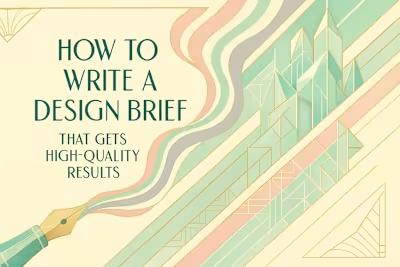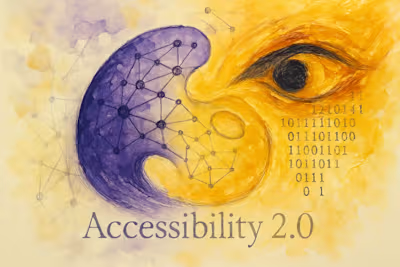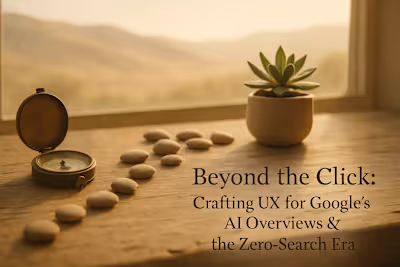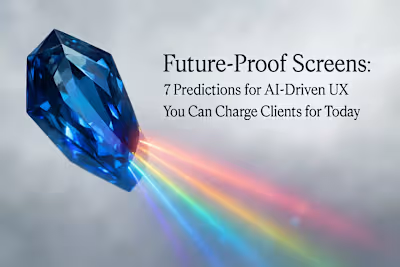Freelancer, Agency, or Full-Time Hire? Choosing the Right Path for Your Project
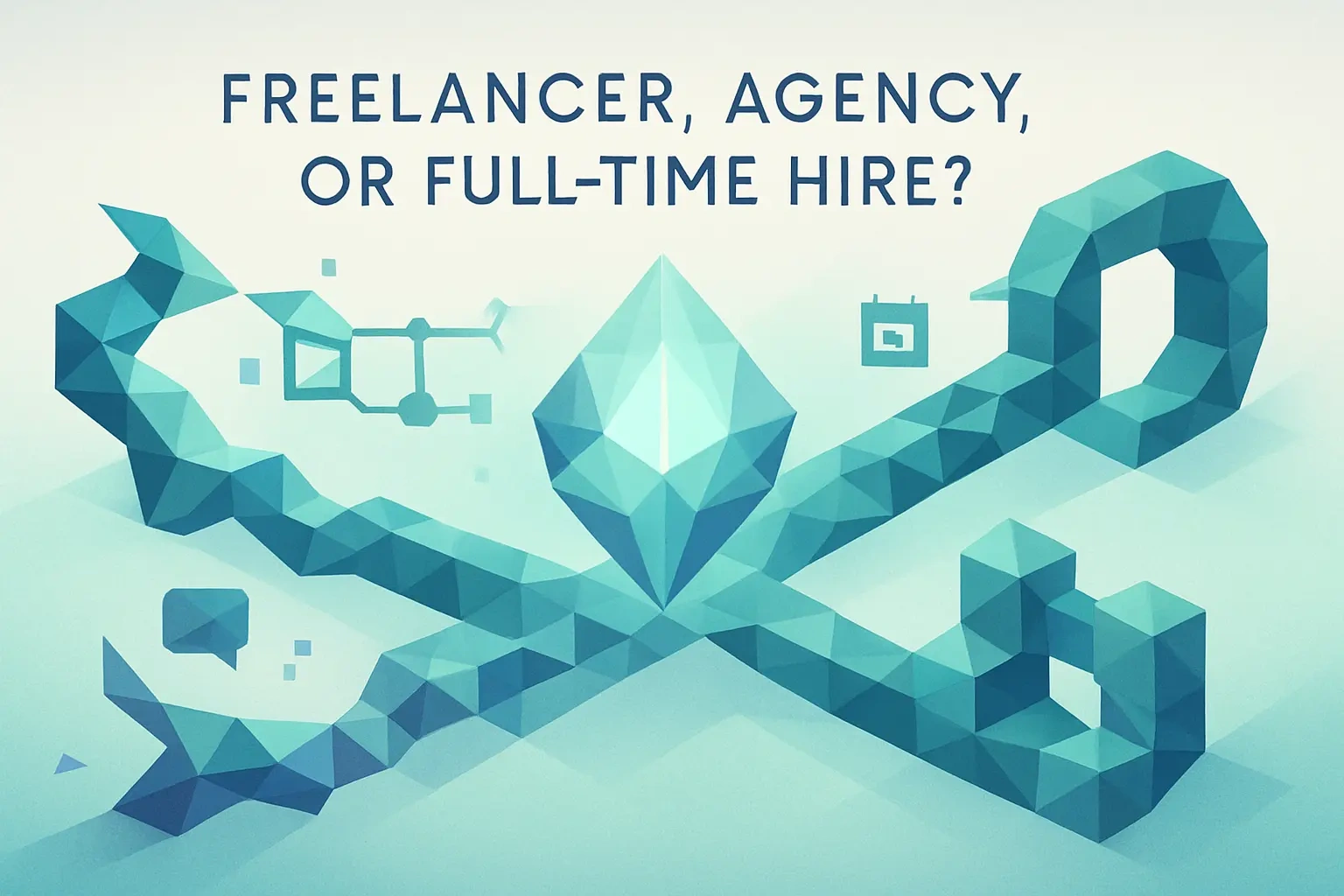
Freelancer, Agency, or Full-Time Figma Designer? Choosing the Right Path for Your Project
The Freelance Figma Designer: Flexibility and Specialized Expertise
Pros of Hiring a Freelancer
Cons of Hiring a Freelancer
Typical Cost Structure
The Design Agency: A Full-Service Team for Complex Needs
Pros of Hiring an Agency
Cons of Hiring an Agency
Typical Cost Structure
The Full-Time Hire: Deep Integration and Long-Term Growth
Pros of a Full-Time Hire
Cons of a Full-Time Hire
Typical Cost Structure
Making the Right Choice: A Decision Framework
References
Freelancer, Agency, or Full-Time Figma Designer? Choosing the Right Path for Your Project
Finding the right design talent can feel like navigating a maze. You know you need professional help, but should you hire a Figma designer on a freelance basis? Partner with a full-service agency? Or commit to bringing someone in-house? The truth is, there's no one-size-fits-all answer. Your best choice depends on your specific needs, budget, and long-term goals.
If you've already recognized the signs you need a professional designer rather than attempting DIY solutions, you're already on the right track. The next step is understanding which hiring model will serve you best. And once you've made that decision, you'll want to know how to write a design brief that attracts top talent and gets you the results you're looking for.
Let's break down each option to help you make an informed decision that aligns with your business objectives.
The Freelance Figma Designer: Flexibility and Specialized Expertise
Freelancers have become the go-to solution for many businesses, and for good reason. They offer a unique blend of flexibility, specialized skills, and cost-effectiveness that can be perfect for certain projects. But like any hiring model, freelancing comes with its own set of advantages and challenges.
Pros of Hiring a Freelancer
The freelance model shines brightest when you need specialized expertise without long-term commitment. Cost-effectiveness tops the list of benefits. Since freelancers don't require office space, equipment, or benefits packages, you're essentially paying for pure talent and output. This lean approach often translates to significant savings, especially for startups and small businesses watching every dollar.
Access to a global talent pool opens doors you didn't know existed. Need a designer who specializes in fintech interfaces? There's a freelancer for that. Looking for someone who understands the nuances of healthcare UX? You'll find them too. This specialized expertise means you can match your exact needs with the perfect skill set, regardless of geographic boundaries.
Flexibility makes freelancers ideal for short-term projects or seasonal work. Got a product launch coming up? Hire a freelancer for the duration. Need to redesign your mobile app? Bring someone in for that specific project. You scale up when needed and scale down when the work is done. No strings attached.
The speed of engagement is another major plus. While hiring a full-time employee can take months, you can often have a freelancer starting on your project within days. This agility is crucial when market opportunities have expiration dates.
Cons of Hiring a Freelancer
However, the freelance model isn't without its challenges. Inconsistent availability can become a real headache. That amazing designer who knocked your last project out of the park? They might be booked solid for the next three months. Freelancers juggle multiple clients, which means you're competing for their time and attention.
Maintaining brand consistency over time requires extra effort. When you work with different freelancers for various projects, each brings their own style and interpretation. Without careful management and clear brand guidelines, your design language can start to drift.
The management burden falls squarely on your shoulders. You'll need to handle project coordination, feedback loops, and quality control. For teams without dedicated project managers, this can eat up significant time and resources.
Communication gaps can also emerge, especially with remote freelancers across different time zones. Quick clarifications might turn into day-long email chains, potentially slowing down your project timeline.
Typical Cost Structure
Understanding freelance pricing helps you budget effectively. Most Figma designers charge either hourly or per project. Hourly rates typically range from $50 to $150, depending on experience and specialization. Junior designers might charge $50-75 per hour, while senior specialists command $100-150 or more.
Project-based pricing offers more predictability. A landing page design might cost $1,500-3,000, while a complete mobile app design could run $10,000-25,000. Many freelancers also offer retainer arrangements for ongoing work, usually at a slight discount from their standard rates.
The beauty of freelance pricing? Lower overhead means more of your budget goes directly to the work itself. No office rent, no benefits packages, no equipment costs – just pure design output.
The Design Agency: A Full-Service Team for Complex Needs
Agencies represent the heavyweight option in the design world. They bring teams, processes, and infrastructure that can handle virtually any challenge you throw at them. But this comprehensive approach comes with its own considerations.
Pros of Hiring an Agency
The primary advantage of agencies lies in their full-team approach. When you hire an agency, you're not just getting a designer. You're getting strategists who understand market positioning, project managers who keep everything on track, and multiple designers who can tackle different aspects of your project simultaneously.
This team dynamic creates built-in quality control. Designs pass through multiple sets of eyes before reaching you. Creative directors ensure consistency. Strategists verify alignment with business goals. The result? More polished, thoroughly vetted work.
Reliability becomes a non-issue with agencies. If one team member gets sick or goes on vacation, others step in seamlessly. Your project never stalls because someone's unavailable. This continuity is invaluable for time-sensitive or mission-critical projects.
Agencies excel at handling large, complex campaigns that require coordination across multiple touchpoints. Need a complete rebrand including web design, mobile apps, marketing materials, and brand guidelines? An agency can orchestrate all these moving parts without breaking a sweat.
Cons of Hiring an Agency
The elephant in the room? Cost. Agencies carry significant overhead – office spaces, full-time staff, administrative teams. All of this gets factored into your project fee. You might pay 2-3x more for agency work compared to freelance equivalents.
Communication can feel less direct. Instead of messaging your designer directly, you'll typically work through account managers or project coordinators. This layer of bureaucracy, while sometimes helpful, can slow down simple requests and create a game of telephone with your feedback.
Agencies also tend to have longer timelines. Their structured processes, while thorough, add time to every stage. What a freelancer might turn around in a week could take an agency three weeks after factoring in internal reviews and approvals.
The "agency treatment" might feel impersonal for smaller projects. You could end up being a small fish in a big pond, especially if the agency primarily serves enterprise clients.
Typical Cost Structure
Agency pricing reflects their comprehensive service model. Most agencies work on project fees or retainers rather than hourly rates. A basic website design project might start at $10,000-15,000. Complex digital products or full rebrands can easily reach $50,000-100,000 or more.
Monthly retainers for ongoing work typically start around $5,000-10,000 for small to mid-sized businesses. Enterprise contracts can reach $25,000-50,000 per month or higher.
These prices include not just design work but also strategy, project management, and often multiple rounds of revisions. You're paying for a turnkey solution rather than just design hours.
The Full-Time Hire: Deep Integration and Long-Term Growth
Bringing a designer in-house represents the ultimate commitment. It's a long-term investment that can transform how design functions within your organization. But it's not a decision to make lightly.
Pros of a Full-Time Hire
The deepest advantage of in-house designers? Complete immersion in your brand. They live and breathe your company culture. They understand your customers intimately. They know your product roadmap, your business challenges, and your competitive landscape. This knowledge translates into designs that feel authentically "you."
Unwavering focus on your business means faster turnaround times for internal requests. Need a quick mockup for tomorrow's board meeting? Your in-house designer can pivot immediately. No contracts to negotiate, no availability to check – just direct collaboration.
Long-term consistency becomes automatic. Your in-house designer becomes the guardian of your brand standards. They ensure every touchpoint maintains visual coherence, from product interfaces to marketing materials.
The communication advantages are huge. Hallway conversations, impromptu brainstorms, and real-time collaboration become possible. Your designer attends team meetings, understands internal politics, and builds relationships that make work smoother.
Cons of a Full-Time Hire
The financial commitment extends far beyond salary. Benefits, equipment, software licenses, training, and office space add 25-40% on top of base compensation. A designer with a $90,000 salary actually costs you $112,000-125,000 annually.
Creative perspectives can become limited over time. While deep brand knowledge is valuable, fresh eyes often spot opportunities that insiders miss. Your in-house designer might develop blind spots or fall into comfortable patterns.
The employment commitment works both ways. If your design needs fluctuate seasonally or by project, you're still paying full salary during slow periods. And if the fit isn't perfect? Letting someone go involves severance, unemployment insurance, and potential legal complications.
Skill gaps become your problem to solve. If your designer excels at UI but struggles with motion graphics, you'll need to train them or hire additional help. Freelancers and agencies can tap specialized talent as needed.
Typical Cost Structure
In-house designer salaries vary widely by location and experience. Entry-level product designers typically earn $60,000-80,000 annually. Mid-level designers command $80,000-120,000. Senior designers and design leads can reach $120,000-180,000 or more in major markets.
Remember to factor in the true cost of employment. Benefits packages (health insurance, retirement contributions, paid time off) typically add 25-30%. Equipment and software might run $5,000-10,000 initially, plus ongoing subscriptions. Professional development and conference attendance add another $2,000-5,000 annually.
For a mid-level designer earning $100,000, your actual annual cost likely approaches $130,000-140,000.
Making the Right Choice: A Decision Framework
So how do you choose? Start by honestly assessing your specific situation. Here's a framework to guide your decision.
Consider project complexity first. Simple, one-off projects? Freelancers excel here. Multi-faceted campaigns requiring diverse skills? Agencies have the bench strength. Ongoing, evolving design needs? In-house makes sense.
Evaluate your budget constraints. Freelancers offer the most flexibility – you pay only for what you need. Agencies require larger upfront investments but include comprehensive support. In-house designers represent the biggest financial commitment but offer the best long-term value for continuous needs.
Think about your timeline. Need something next week? A freelancer can often deliver. Have a few months for a major initiative? An agency's structured approach ensures thoroughness. Building for the long haul? Invest in an in-house designer who'll grow with your company.
Assess your management capacity. Comfortable directing creative work and managing projects? Freelancers could work well. Prefer a hands-off approach with professional project management? Agencies deliver that. Want someone who'll eventually self-direct and own design decisions? Hire in-house.
Consider your collaboration preferences. Love working directly with creatives? Freelancers offer that direct line. Prefer structured communication through account managers? Agencies provide that buffer. Want someone in your daily standups? Only in-house delivers that.
The best choice often involves combining approaches. Many successful companies use in-house designers for core work, agencies for major campaigns, and freelancers for specialized projects. This hybrid model leverages each option's strengths while minimizing weaknesses.
Start small if you're unsure. Test the waters with a freelancer on a limited project. If that goes well, consider a longer engagement or small agency project. Use these experiences to clarify what you really need before making a full-time hire.
Remember, you're not locked into one model forever. Your needs will evolve as your business grows. What works perfectly today might feel constraining next year. Stay flexible and adjust your approach as circumstances change.
The key is matching your choice to your current reality while keeping future growth in mind. Whether you choose a freelancer's agility, an agency's comprehensive support, or an in-house designer's deep integration, make sure it aligns with where you are and where you're headed.
Design is too important to leave to chance. By thoughtfully considering your options and honestly assessing your needs, you'll find the right fit that helps your business thrive. The perfect design partner is out there – now you know how to find them.
References
Like this project
Posted Jul 6, 2025
Deciding between a freelance Figma designer, a design agency, or a full-time hire? This guide breaks down the pros, cons, and costs to help you choose wisely.
Likes
0
Views
5





